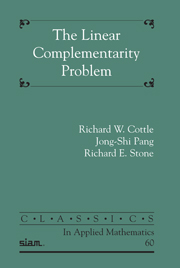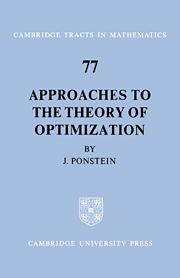Facts, Conjectures, and Improvements for Simulated Annealing
Simulated annealing has proved to be an easy and reliable method for finding optimal values of a problem in cases where there is no road map to possible solutions. Facts, Conjectures, and Improvements for Simulated Annealing offers an introduction to this topic for novices and provides an informative review of the area for the more expert reader. This book brings together for the first time many of the theoretical foundations for improvements to algorithms for global optimization that until now existed only in scattered research articles. The method described in this book operates by simulating the cooling of a (usually fictitious) physical system whose possible energies correspond to the values of the objective function being minimized. The analogy works because physical systems occupy only states with the lowest energy as the temperature is lowered to absolute zero.
Product details
October 2002Paperback
9780898715088
164 pages
254 × 178 × 8 mm
0.311kg
This item is not supplied by Cambridge University Press in your region. Please contact Soc for Industrial null Mathematics for availability.
Table of Contents
- List of Figures
- Preface
- Acknowledgments
- Part I. Overview. 1. The Place of Simulated Annealing in the Arsenal of Global Optimization
- 2. Six Simulated Annealing Problems
- 3. Nomenclature
- 4. Bare Bones Simulated Annealing
- Part II. Facts. 5. Equilibrium Statistical Mechanics
- 6. Relaxation Dynamics-Finite Markov Chains
- Part III. Improvements and Conjectures. 7. Ensembles
- 8. The Brick Wall Effect and Optimal Ensemble Size
- 9. The Objective Function
- 10. Move Classes and Their Implementations
- 11. Acceptance Rules
- 12. Thermodynamic Portraits
- 13. Selecting the Schedule
- 14. Estimating the Global Minimum Energy
- Part IV. Towards Structure Theory and Real Understanding. 15. Structure Theory of Complex Systems
- 16. What Makes Annealing Tick?
- Part V. Resources. 17. Supplementary Materials
- Bibliography
- Index.





